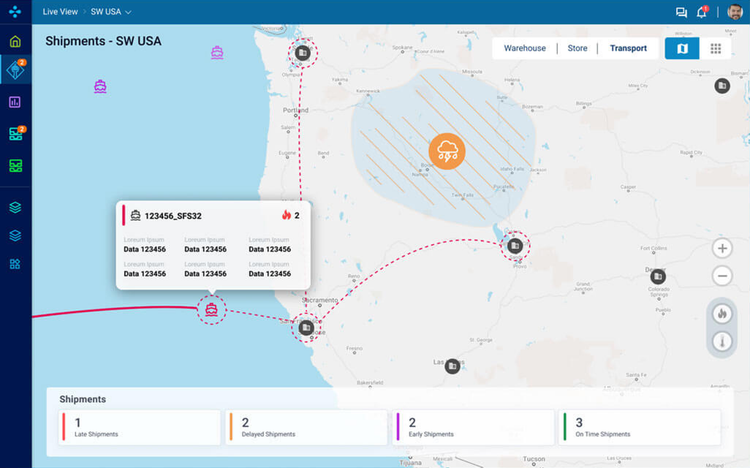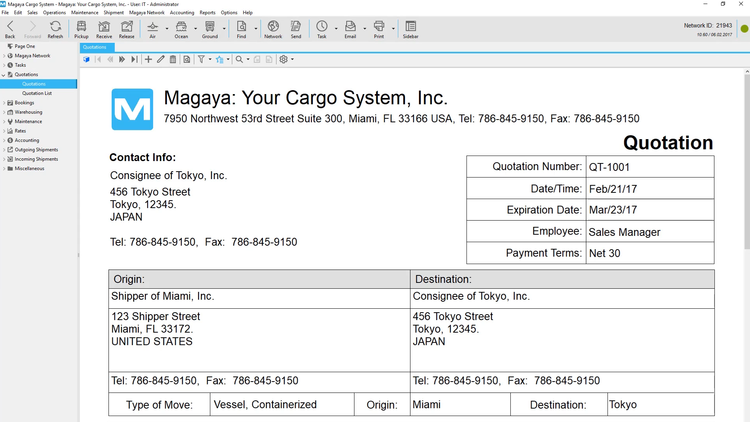Supply Chain Management vs. Logistics: What’s the Difference?
Supply chain management (SCM) involves sourcing raw materials, manufacturing products, and delivering goods and services to end consumers. Logistics is a subset of SCM that supports planning and controlling the movement and storage of goods within a single organization.
Both are needed to ensure smooth operations, but logistics is a much smaller part of the process. End-to-end supply chain management follows raw materials until they become finished goods. However, each logistics operation is only responsible for a self-contained part of the supply chain.
| Aspect | Logistics | Supply Chain Management (SCM) | Similarities |
|---|---|---|---|
| Definition | Involves moving and storing goods within a single organization. | Involves coordinating goods and services from sourcing to delivery. | Both control the movement of goods and use tools like inventory tracking software and transportation management systems. |
| Purpose | Optimizes internal logistics operations within an organization. | Coordinates across multiple organizations for efficient supply flow. | Both streamline warehousing, transportation, and order fulfillment processes. |
| Scope | Focused on specific internal processes like warehousing and distribution. | Broader scope, covering sourcing, production, distribution, and sales. | Both use inventory and transportation management systems. |
| Components | Warehousing, distribution, packaging, and inventory management. | Procurement, manufacturing, quality control, and logistics. | Both rely on forecasting for demand planning and cost optimization. |
| Example | A company uses logistics to store finished goods and manage transportation to buyers. | A clothing company sources fabric, manufactures garments, and sells through multiple channels. | Both utilize barcode scanning, RFID, and enterprise resource planning (ERP) systems to track goods. |
| Use of Technology | Often overlaps with warehouse or inventory management solutions. | Utilizes ERP and SCM software for end-to-end supply chain visibility. | Both integrate with technology to enhance logistics and supply chain functions. |
What is Supply Chain Management?
Supply chain management (SCM) is the active coordination of goods and services from businesses to their end destinations. It covers the entire global supply chain, from sourcing raw materials through the production process to delivering the finished product to end consumers.
For most companies, the supply chain starts with the procurement of raw materials. Businesses select suppliers based on the materials’ quality and price. Those components are then transported to a manufacturing or processing facility, where they are turned into finished products. Quality control inspects each item to ensure it meets company standards.
The next step in the supply chain is selling the product or service. The final step is delivering finished goods to retail stores or an individual buyer. In some cases, supply chain management includes handling product returns and recalls.
Supply Chain Management Example:
A clothing company’s supply chain procures fabric from third-party suppliers. The fabric is then sent to a manufacturing facility to be cut and sewn into clothing items.
Each finished garment is then available for purchase, either directly to buyers through an eCommerce website or to brick-and-mortar retailers who sell to in-person customers.

What is Logistics in Business?
In the business world, logistics involves the movement and storage of goods from the point of origin to the point of consumption. This process is generally based on internal points within the supply chain. For instance, logistics can control the movement of finished goods to a warehouse or distribution to customers but may not cover the transport of raw materials to a factory.
Logistics management overlaps with warehouse or inventory management software as it records where products physically are as they move along the supply chain. When an item is sold, logistics is used to find its location in storage and track its transportation journey to the buyer.
Logistics Example:
A home goods company stores assembled furniture in a warehouse before sending it to the showroom. Logistics optimizes the storage of each piece for easier retrieval after a sale.
Logistics may also be used to determine how to arrange a truck for product transportation. These two processes are both part of logistics but remain independent of each other.
What are the Similarities?
Both supply chain management and logistics control the movement of goods along the supply chain. They can also incorporate warehouse management and inventory control software to track where assets or finished goods are at all times. Additionally, they both use transportation management systems to make shipments as quick and efficient as possible.
Another key similarity lies in how they help businesses plan ahead. For instance, both use forecasting to anticipate customer demand and adjust production. This forecasting helps organizations implement lean or just-in-time manufacturing methodologies, keeping costs down by only producing what is needed at any given time.
What are the Key Differences?
Logistics and the supply chain both move products around, yet supply chain management also covers purchasing from partners, manufacturing or assembling goods, and meeting customer demand. SCM is focused on the “big picture,” covering every step of the supply network, while logistics only covers the internal movement of goods.
In short, logistics are a component of supply chain management strategies used by businesses. The main logistical components of SCM include:
- Supplier relationships
- Inventory management
- Warehousing
- Packaging or kitting
- Distribution and returns
You can think of the supply chain as internal and external, while logistics is solely internal. SCM attempts to coordinate between all companies involved in creating and selling goods and services. In contrast, logistics only deals with a single organization.

Best Practices
Supply chain management strategies with logistics help businesses improve procurement, production, and distribution. Combined with these best practices, companies can cut costs and improve customer satisfaction.
1. Source backup vendors for a steady supply of materials The start of the supply chain is always the same: sourcing raw materials. Supplier relationships are important, but businesses must have backup vendors readily available in case of disruptions. These vendors should be thoroughly vetted to ensure business continuity and material quality.
2. Improve inventory organization to avoid delays A warehouse with overstocked shelves and an unmarked layout can lead to substantial delays when retrieving goods for buyers. Keep the supply chain moving by using logistics to arrange inventory for easier retrieval.
Organizational systems range from digitized to alphabetical or numerical. Other systems might categorize goods based on SKUs or size and color arrangements.
3. Use quality control for better products and happier customers Businesses can ensure customer satisfaction with detailed quality assurance practices. Perform regular inspections and constantly seek ways to improve your processes to create better products.
This extra attention to detail also includes the proper handling of fragile or temperature-controlled assets that require additional care.
Benefits of SCM Software
Supply chain management software automates end-to-end supply chain processes, including logistics. Streamlining these processes means faster deliveries, lower costs, and happier customers. Cloud-based SCM solutions offer businesses a competitive advantage as global supply networks grow and require faster, real-time responses to disruptions.
Third-party logistics (3PL) software is another solution used by companies that outsource distribution, warehousing, and fulfillment. This is useful for smaller companies that need to coordinate the flow of goods through multiple locations, vendors, or end-retailers.
